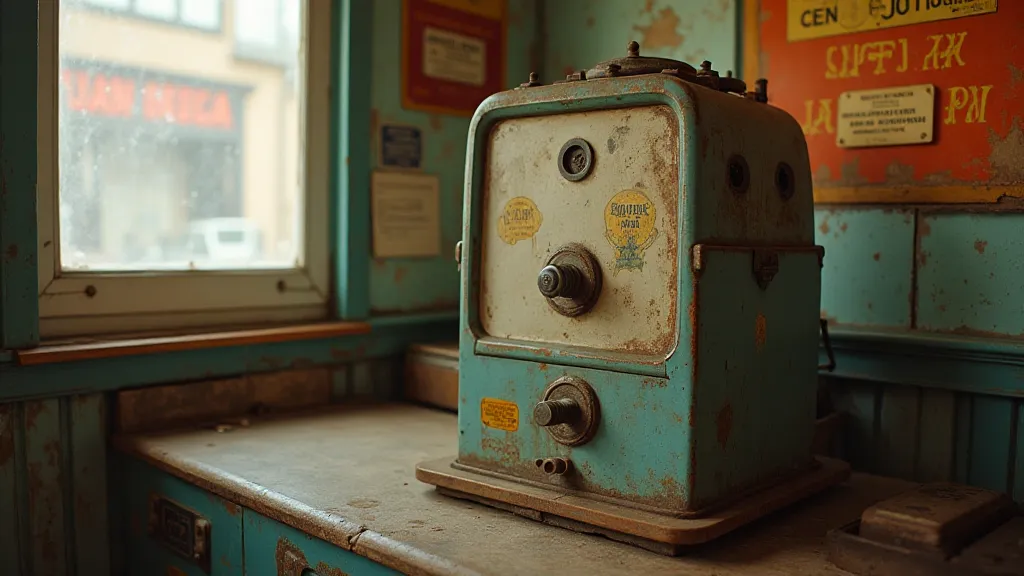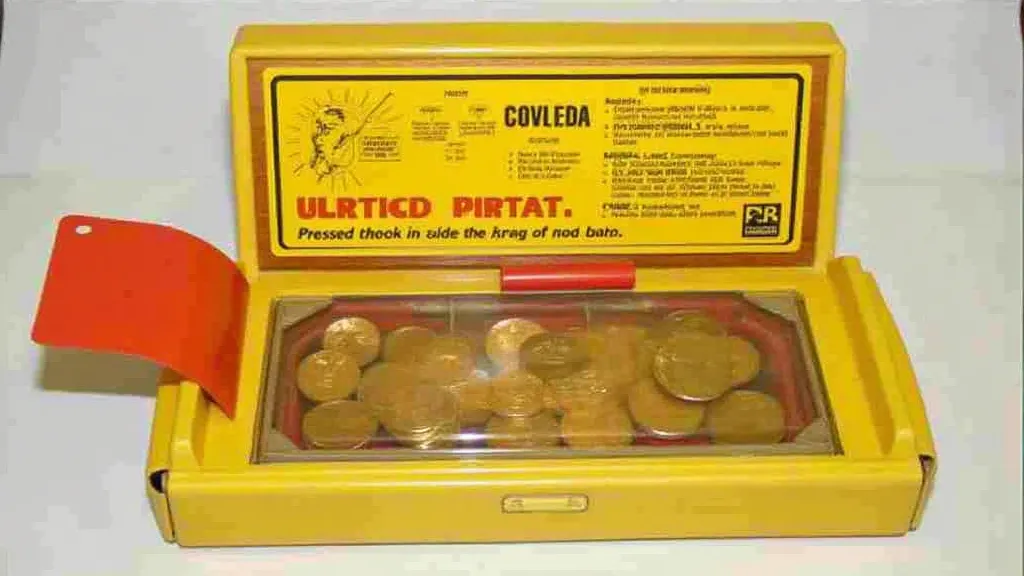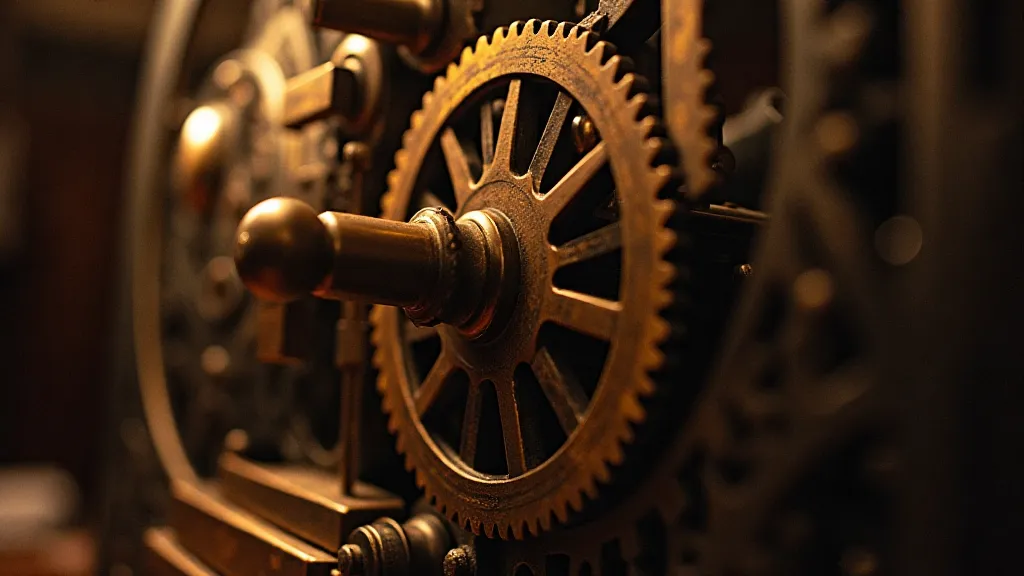Copper & Chromatic Echoes: The Evolution of Pressed Penny Machine Design
There’s a quiet romance to the history of pressed pennies, a connection to simpler times and the unhurried joy of discovery. Beyond the gleaming copper coin, lies a story of ingenious mechanical design, a visual evolution mirroring technological progress itself. For the pressed penny collector, understanding the machines that create these keepsakes offers a richer appreciation – it's akin to admiring the craftsmanship of an antique accordion, recognizing the precision and artistry within.
My own fascination began not with the pennies, but with the machines themselves. As a child, accompanying my grandfather on road trips, I was captivated by the whirring, clanging, and ultimately the satisfying *thunk* of the penny pressing. It wasn't merely a transaction; it was a miniature performance, a mechanical ballet. These weren’t just coin-operated devices; they were portals to a bygone era, each model a testament to clever engineering.
The Early Days: The Douglas and the National Vendors
The story truly begins in 1951 with Wallace Douglas, a bowling alley owner in California. Frustrated with vandalism of his arcade games, he devised a clever solution: a coin-operated device that pressed a design onto a Lincoln cent. This first-generation machine, the Douglas, was revolutionary. It was large, clunky, and operated via a lever system – a far cry from the sleek machines we see today. These early models often featured simple, elegant designs, showcasing the novelty of the process more than elaborate imagery. The process of collecting these early pressed pennies, and the pursuit of the machines that produced them, often leads to a broader exploration – a true unearthing of forgotten pressed penny locations, relics of a bygone era of roadside attractions and tourist stops. The designs themselves, often limited to basic shapes and local landmarks, speak to an era when less was more, letting the novelty of the pressing itself be the primary draw.

The mid-to-late 1950s saw the rise of the National Vendors, another significant player in the pressed penny machine industry. National Vendors machines differed from the Douglas in design, often incorporating a more streamlined appearance and improving the reliability of the pressing mechanism. While the Douglas machines relied heavily on levers, National Vendors began exploring simpler, more efficient mechanisms. The evolution of these machines wasn't solely about efficiency; it was about creating an experience that was more accessible and enjoyable for the average person. The shift toward user-friendliness marked a subtle but significant change in the industry, prioritizing ease of use over complex mechanical engineering. Collectors are particularly fascinated by machines from this transitional period, which demonstrate the early stages of this design shift.
The Rise of the "Little Lion" and Machine Standardization
The 1960s brought about what's affectionately known among collectors as the "Little Lion" era. These were smaller, more compact machines manufactured by various companies, but often sharing a common design—the iconic Little Lion. These machines, despite their shared aesthetic, represented a crucial step towards standardization in the pressed penny industry. They were easier to maintain and less intimidating for casual users. The increased portability of these machines also led to their proliferation in tourist destinations, souvenir shops, and arcades across the nation. Beyond the thrill of acquiring the pennies themselves, many collectors find themselves captivated by the stories they represent – the pressed penny as a time capsule, preserving fragments of moments and memories from travels past. The rise in popularity also spurred a creativity in the designs pressed into the coins, moving beyond simple landmarks to incorporate more intricate scenes and logos. This reflects a broader trend in American culture during the 1960s, a period of experimentation and a desire for greater self-expression.
This period also saw the introduction of the "Y" machines, a unique design known for its distinct pressing die configuration. These machines are particularly sought-after by collectors due to their relative rarity and unique design features. The craftsmanship of these older machines is remarkable – the intricate gears, the precise alignment of the pressing dies – it speaks to a time when mechanical ingenuity was celebrated. The artistry involved in creating these machines, and the subsequent designs, frequently tells a story as compelling as the pennies themselves. Imagine the dedication required to precisely etch a miniature scene into a metal die, ensuring that the image would be faithfully reproduced with each press!
The "S" and "PB" Machines: Technological Refinements
The 1970s and 1980s witnessed further refinements in machine design. The "S" machines, known for their durability and relatively simple operation, became commonplace. These machines incorporated improved motor systems and more robust pressing mechanisms. The shift towards electric motors significantly reduced the physical exertion required to operate the machines, contributing to their increased popularity. Interestingly, as these machines became more user-friendly, the focus shifted from the mechanics of the process to the resulting design. This fostered a flourishing of artistic expression, leading to more elaborate and detailed pressed penny designs, prompting many collectors to meticulously document the designs and their associated stories. The sensory experience of interacting with these machines, the metallic scent, the vibrations, the satisfying *thunk* – all contribute to the allure of the hobby, a weight of a moment captured in a pressed penny.
The “PB” machines, manufactured by Peterson Button, represented a significant leap forward. These machines, often characterized by their sleek, modern design and improved reliability, further streamlined the pressing process. Peterson Button’s commitment to quality and innovation solidified their position as a leading manufacturer in the pressed penny industry. They meticulously documented their designs and improvements, a testament to the value placed on mechanical precision. This pursuit of excellence not only enhanced the functionality of the machines but also elevated the art of pressed penny collecting, as these machines allowed for even more intricate and visually appealing designs to be captured in miniature.

The Digital Age and Machine Longevity
The dawn of the digital age brought about a slowdown in new machine designs. While there have been some modern iterations incorporating digital displays and automated processes, the core mechanics remain remarkably similar to those developed decades ago. The longevity of these machines is a testament to the inherent quality of their design and the durability of their construction. For serious collectors, the challenge isn't just about finding rare pennies, but understanding the full story behind the machines that created them - knowing what sparked their creation, how they were used and the impact they had. The designs themselves are often influenced by the cultural and artistic trends of the time, providing a unique window into the past. Observing how the pressed penny designs have evolved over the decades offers a fascinating perspective on American history and popular culture. The intricate details etched into these tiny coins tell stories of changing fashions, evolving technologies, and the ever-changing landscape of American society. Many designs tell a story, which for some collectors is just as compelling as the rarity of the coin itself.
It's fascinating to observe how these machines, many of which are decades old, continue to operate. They’re often maintained by dedicated individuals who understand the delicate balance of gears and levers. Restoring an older machine isn't simply about replacing worn parts; it's about preserving a piece of history, ensuring that future generations can experience the simple joy of a freshly pressed penny. These individuals often plan meticulous journeys, a pocketful of wanderlust driving them to discover and document these mechanical marvels. Many collectors find immense satisfaction in the research and documentation of these machines, meticulously tracking their locations, production dates, and unique characteristics. The pursuit of knowledge and preservation is just as important as the acquisition of rare pennies for these dedicated enthusiasts.
The value of pressed pennies isn't solely determined by the design or rarity of the coin. It's intrinsically linked to the machine that created it. A rare pressed penny from a particularly scarce machine – a Douglas, a “Y,” or an early "PB” – commands a significant premium in the collector’s market. The machine itself becomes an artifact, a tangible link to the past. The aesthetic appeal of the machines themselves has also contributed to their collectible value; collectors often seek out examples in pristine condition to showcase their admiration for the ingenuity and craftsmanship of the era. Many collectors are drawn to the artistic expression evident in the designs, appreciating the intricate details and creative themes that have been immortalized in miniature form.
Looking at these machines—the Douglas, the National Vendors, the Little Lions, the “PB” models—is more than just observing technological advancements. It’s a window into the evolution of American leisure, a reflection of the enduring appeal of simple pleasures. The stories these pressed pennies tell are often interwoven with personal memories and travel experiences. For many, collecting pressed pennies is more than just a hobby; it's a way to document their journeys and preserve cherished moments in time. Consider the power of a single pressed penny, capturing not just a fleeting image but also a collection of emotions and memories associated with a particular place or experience.

The beauty of pressed penny collecting goes beyond mere acquisition; it encompasses a deep appreciation for artistry, history, and the enduring power of simple pleasures. The stories etched into these miniature masterpieces offer a unique glimpse into a bygone era, while the machines themselves stand as testaments to human ingenuity and craftsmanship. Many designs reflect the cultural landscape of their time, providing valuable insights into the trends, fashions, and events that shaped American society. The artistry evident in the designs and the machines reflects a period when craftsmanship and attention to detail were highly valued. This has fostered a community of passionate collectors who share a love for history, art, and the enduring charm of pressed pennies. The designs frequently reflect broader artistic movements and cultural trends, creating a unique visual record of American history.
For those captivated by the artistry and history surrounding pressed pennies, exploring the narratives behind these miniature treasures can be an incredibly rewarding journey. The meticulous design of the machines, the intricate details etched into the coins, and the stories they encapsulate all contribute to the enduring allure of this fascinating hobby. Consider the impact of these machines on the American landscape, transforming ordinary places into destinations filled with memorable experiences. The allure of pressed penny collecting extends beyond the acquisition of rare coins; it's about connecting with a shared history, celebrating human creativity, and preserving the magic of a bygone era.





